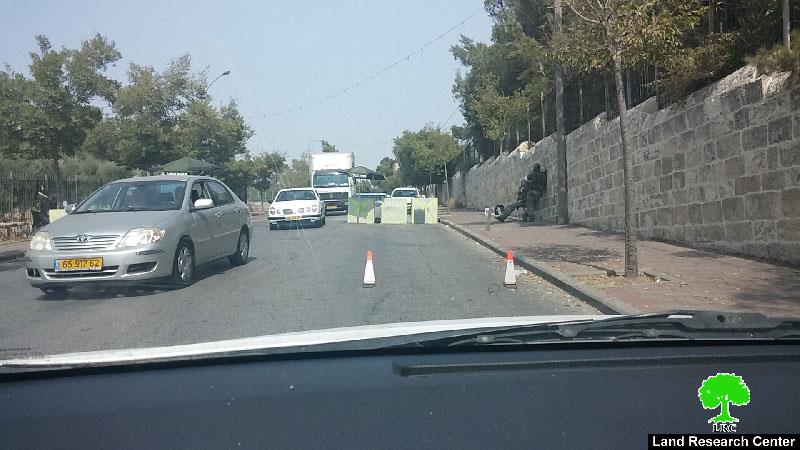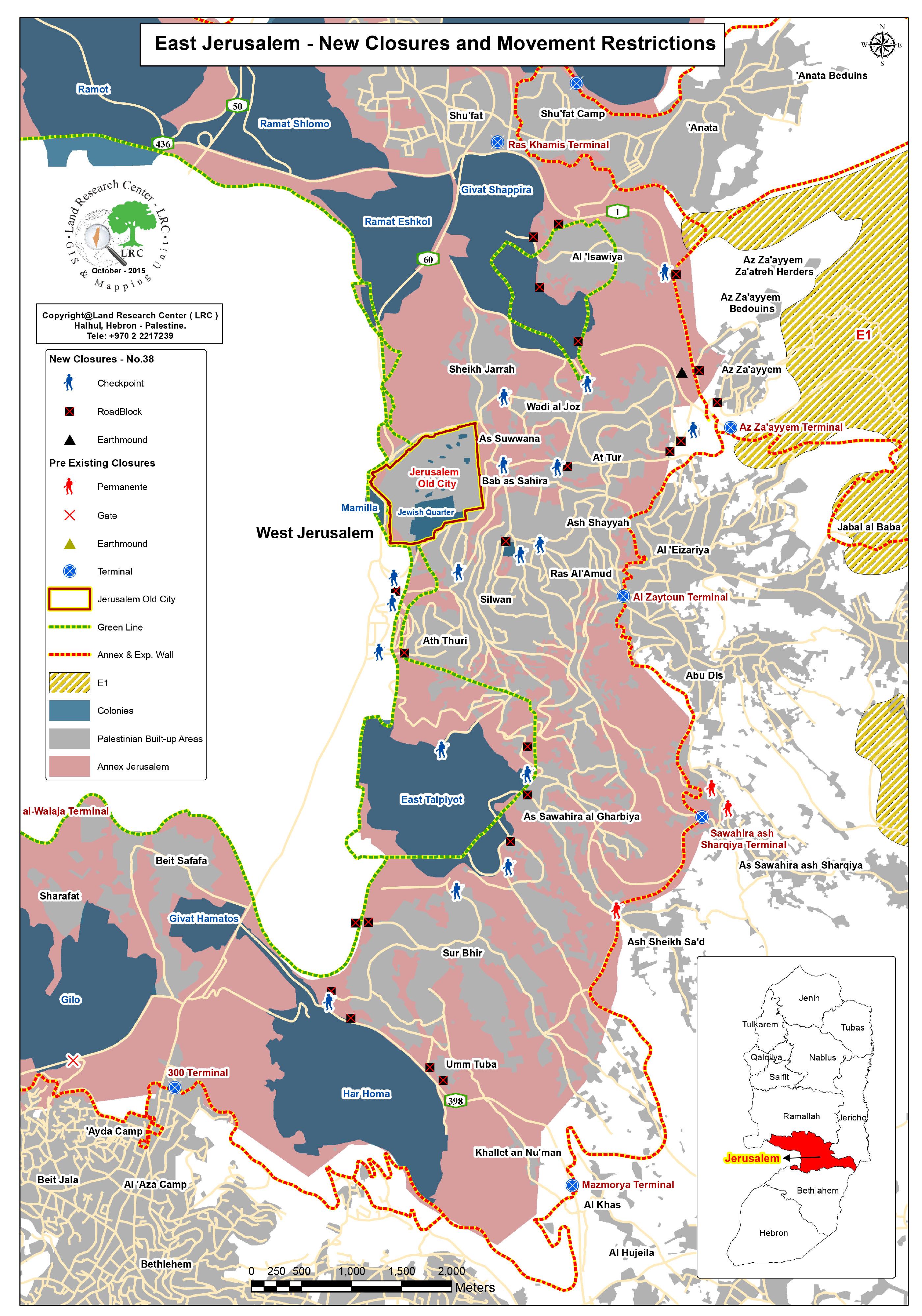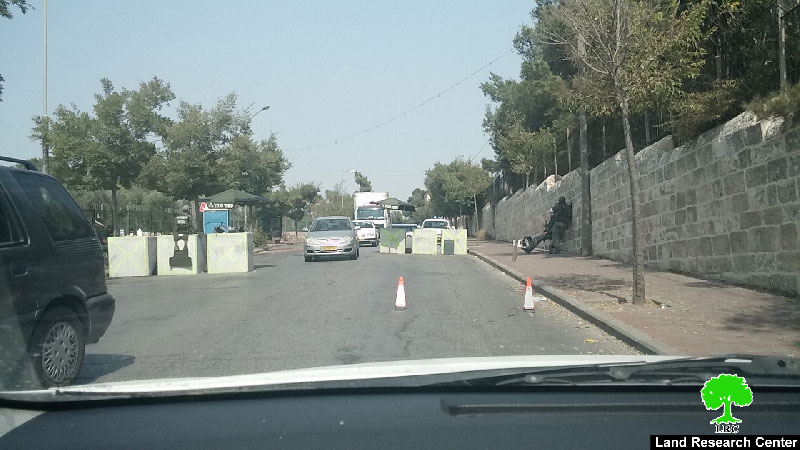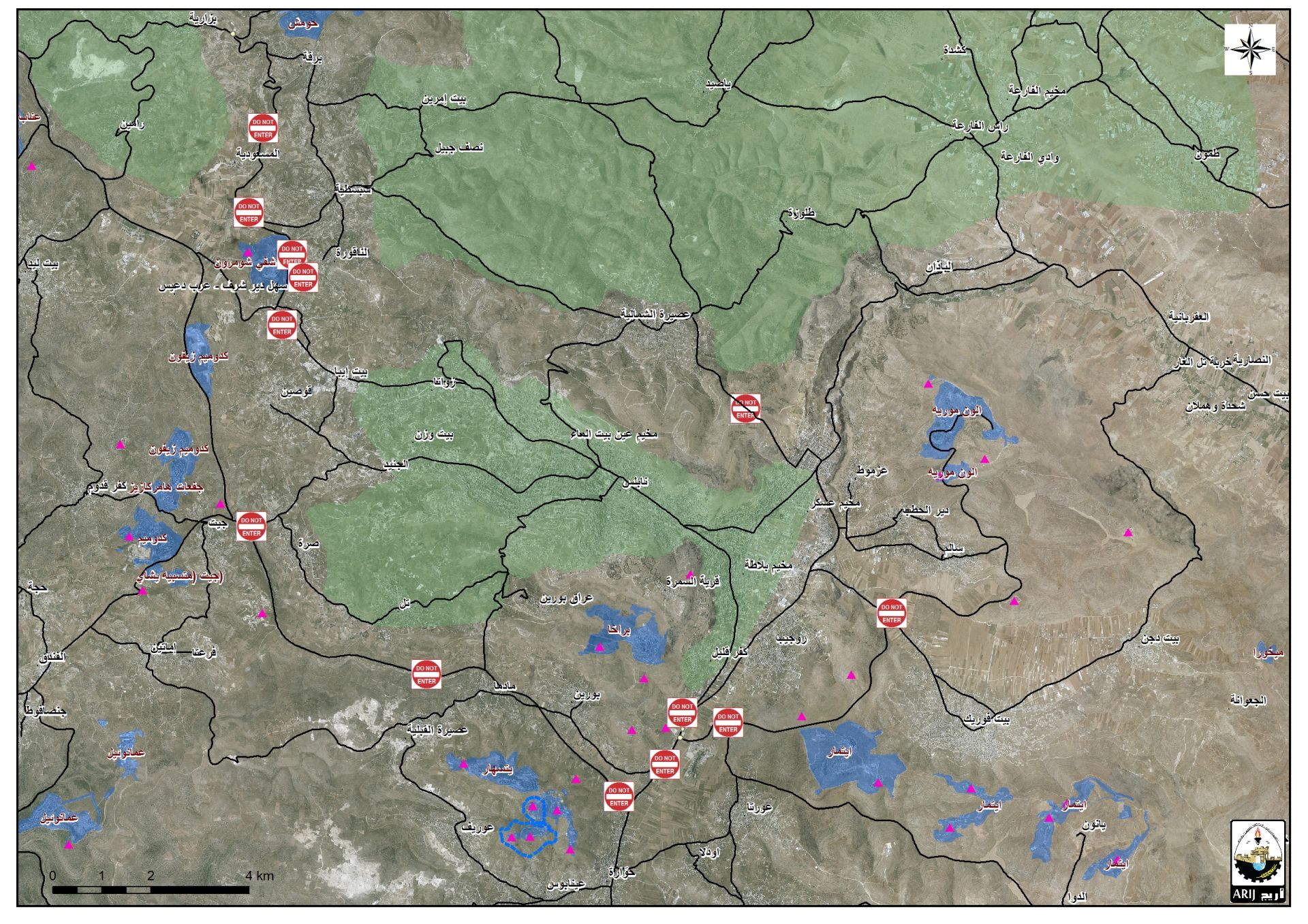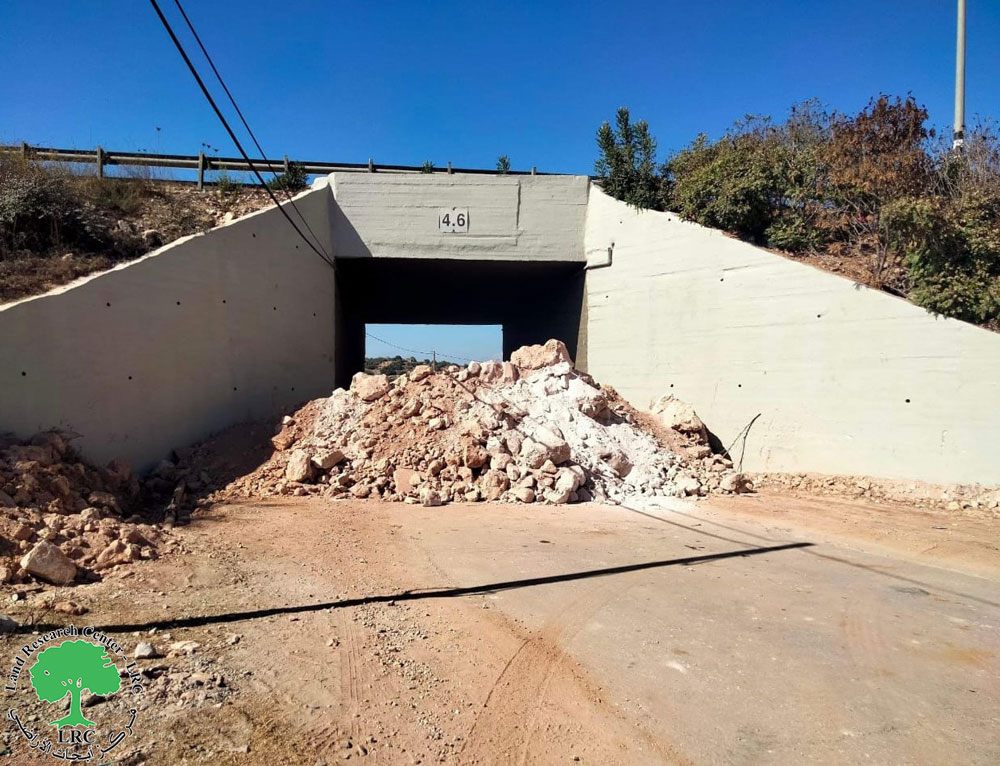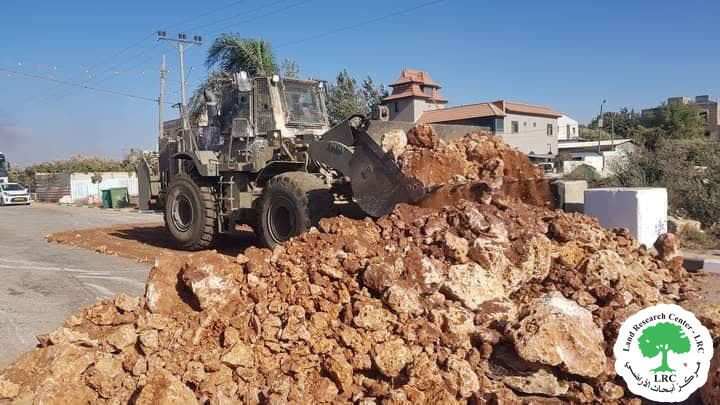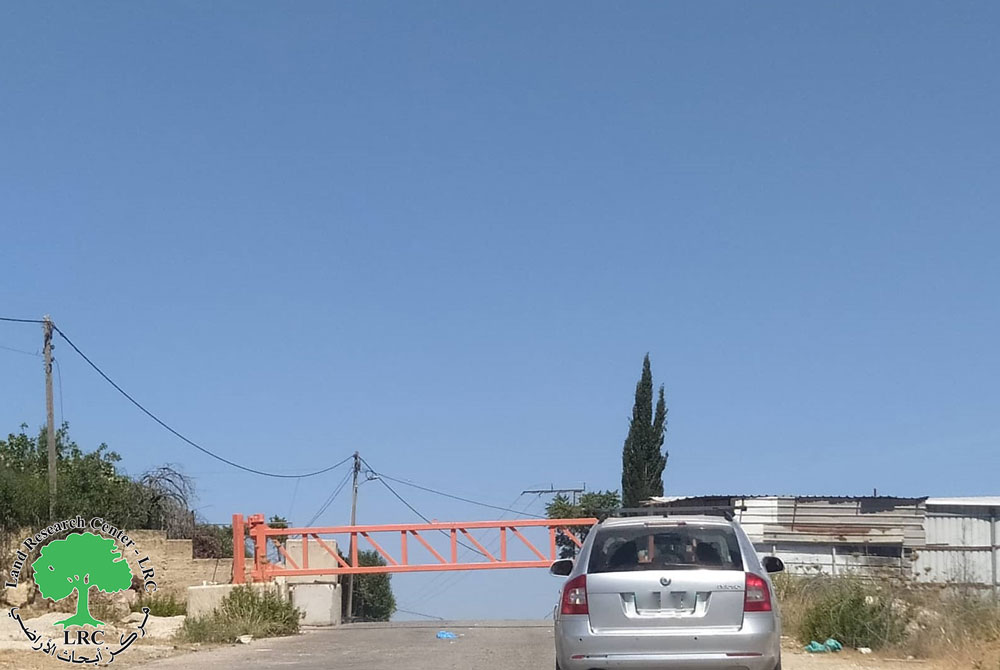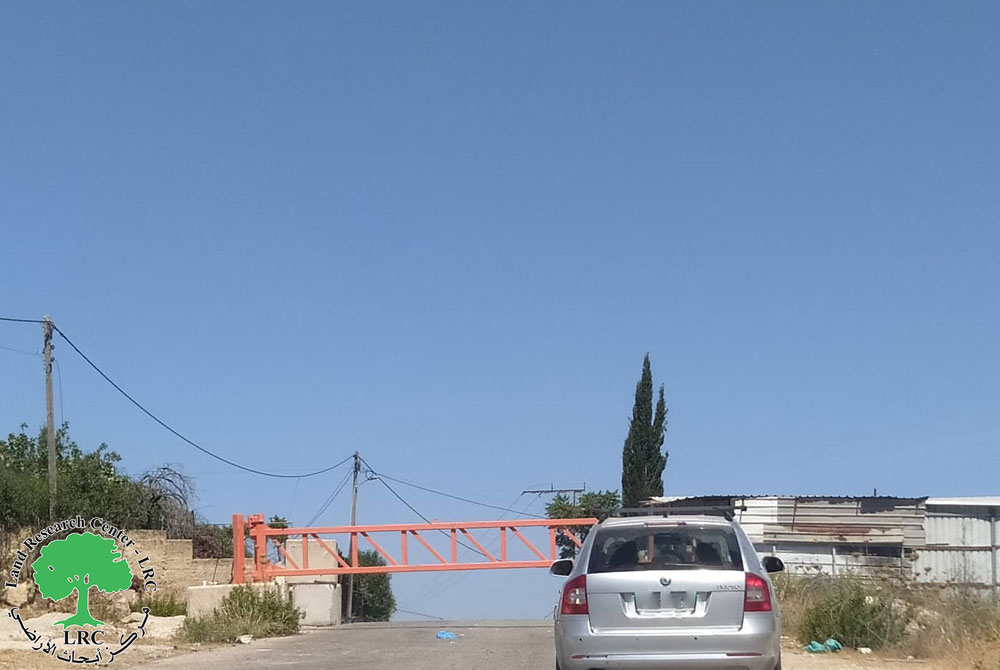The cabinet of Israel made decisions on October 13, 2015 to collectively punish Palestinian in response to the latest popular uprising in the occupied city of Jerusalem, which later reached different areas of the West Bank, Gaza and the occupied territories of the 1948. Palestinians’ wave of rage came in response to the attacks and raids on Al-Aqsa mosque by colonists and to banning worshipers from praying and entering the compound of the mosque, not mentioning to attacking women, kids and elderly.
In the meeting headed by Prime Minister Netanyahu, the following decisions were made:
- Calling up the back-up troops to be deployed in the city to protect colonists and general transportations commuters
- Surrounding the Arab neighborhoods in the eastern and northern part of Jerusalem
- Demolishing the homes of martyrs who carried out attacks against colonists and police
- Revoke the citizenship of the attackers’ family members
After the meeting was over, the government deployed a big number of police troops in the city and at the entrance of Arab neighborhoods and set up checkpoints to thoroughly search cars and people. Also, some neighborhoods were closed by road blocks and were declared inaccessible but for pedestrians. The closed neighborhoods are:
|
# |
Location of checkpoint |
Closed entrance and type of closure |
|
1 |
Jabal Al-Mukabbir |
Entrance of Al-‘Beidat neighborhood is closed by a checkpoint |
|
2 |
Jabal Al-Mukabbir |
Entrance of Al-Faruq neighborhood is closed by a checkpoint |
|
3 |
Jabal Al-Mukabbir |
Entrance of Auz police station is entirely closed |
|
4 |
Jabal Al-Mukabbir |
Entrance of Ramat Rahel road is entirely closed |
|
5 |
Al-Isawiya |
Northern entrance is closed by road block |
|
6 |
Al-Isawiya |
Northwestern entrance is closed by road blocks |
|
7 |
Al-Isawiya |
Western entrance is closed by road blocks |
|
8 |
Al-Isawiya |
Southern entrance is closed by a checkpoint |
|
9 |
Az-Za’ayyem |
Western entrance is closed by road blocks with a checkpoint. Only pedestrians can go through. |
|
10 |
Az-Za’ayyem |
Southwestern entrance is closed by road blocks with a checkpoint. Only pedestrians can go through. |
|
11 |
Al-Tur |
Street of Al-Muttala’ hospital was closed by road blocks. Cars were allowed through but with prior search. |
|
12 |
Al-Tur |
Street of Salman Al-Farsi was closed by road blocks. Only pedestrians were allowed through. |
|
13 |
Al-Sheik Jarrah |
Circle of Al-Sheik Jarrah was closed by road blocks. Only pedestrians were allowed through. |
|
14 |
Al-Sheik Jarrah |
A checkpoint for car search with road blocks were installed next to Mar Yousef hospital |
|
15 |
Al-Suwwana |
Closed by road blocks and a checkpoint for cars search |
|
16 |
Al-Suwwana |
A checkpoint near Beit Aurut colony was set up |
|
17 |
Wad Al-Juz |
Closed with road blocks. Only pedestrians were allowed through |
|
18 |
Sur Bahir |
Western entrance near Ramat Rahel colony was closed by road blocks |
|
19 |
Sur Bahir |
Western entrance was closed by road blocks and a checkpoint. Cars were allowed through. |
|
20 |
Al-Thawri |
Northern entrance leading to Tal Buyout colony was closed by a checkpoint |
|
21 |
Al-Thawri |
Southern entrance leading to Silwad was closed by a checkpoint |
|
22 |
Um Tuba |
Closed by road blocks |
|
23 |
Um Tuba |
Entrance of the terminal is closed by road blocks
|
Source: Field observation- Department of Monitoring Israeli Violations- Land Research Center-2015
Setting up checkpoints and deploying troops in the city of Jerusalem is a provocative step to humiliate Jerusalemites; young men were forced to take off their cloths and pedestrians got repeatedly assaulted violently.
Such closures and checkpoints restrain people’s movement and hinder their daily lives. This made the neighborhoods of Jerusalem a big prison that is inaccessible but through checkpoints and cruel soldiers.
Death of a female citizen due to a closure:
Huda Darawish(65) died at the checkpoint of Al-Isawiya neighborhood after the car moving her to the hospital was not allowed to pass through. Soldiers at the checkpoint searched cars thoroughly and took long time in the process. One of Huda’s sons got off the car and approached the soldier to explain his mother’s urgent case but the soldiers threatened him of shooting. After more than half an hour, the car was allowed through the checkpoint to reach the hospital but Huda was dead by then. The policy of closures imposed by the Israeli government is a vicious crime and a humiliation for all Palestinians.
Article 13 of the (1948) Universal Declaration of Human Rights stated the following:
(1) Everyone has the right to freedom of movement and residence within the borders of each state.
(2) Everyone has the right to leave any country, including his own, and to return to his country.
A daily violation against civilians at checkpoints is detaining them for hours, cursing and assaulting them. The international Humanitarian Law stated that civilians under occupation must be treated humanely in all conditions without any discrimination. All civilians must also be protected from all types of violence including killing and torture.
Despite the law, the Israeli Forces kept on its measures and practices; a mobile apartheid wall was set up between the neighborhood of Jabal Al-Mukabbir and Armon Hantsif colony.
Conclusion:
What happens in Jerusalem –starting with the time division of Al-Aqsa mosque, age-limited access, and ban of access to the mosque moving to allowing colonists inside the mosque and evicting it from Muslim worshipers; smashing the windows of the mosque and firing tear gas canisters inside of it; killing young men on the claim of threat suspicion; closing Arab neighborhoods; and calling upon revoking citizenship of Jerusalemites– assures that the Israeli government is focused in the program of displacement plans, which violates all international laws and covenants that consider Jerusalem as part of the occupied territories of the 1967, the landmarks of which must not be changed or modified.
Prepared by
The Land Research Center
LRC

